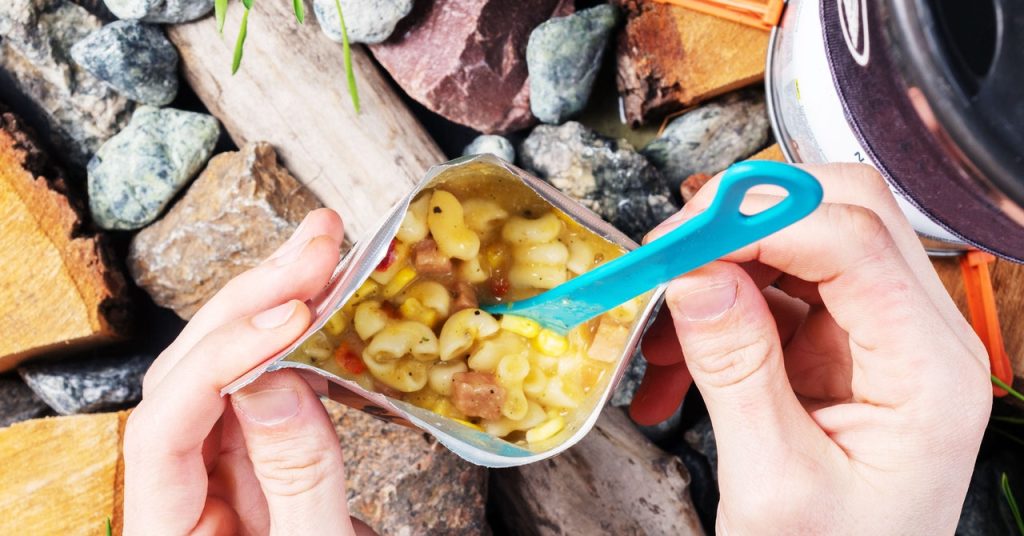Not all survival food is ready to eat. Some must be cooked in a pot over a source of heat, like offerings from My Patriot Supply, which sells a four-week kit that provides 2,000 calories per day for $237. The catch is that each recipe—including mushroom rice pilaf, chili mac, and potato soup—needs to simmer for 20 minutes on average.
That doesn’t work for some: “I look for stuff that’s portable, that I don’t need a fire to cook,” says Christopher Jensen, a prepper from Idaho Falls. “I look for stuff that’s going to last a long time. A lot of calories, stuff that has nutrients—I try to get nonprocessed food because when you process food, you lose a lot of the nutrients. Price is not a factor to me. I try to buy good quality food. But also stuff that I’m not gonna get bored of.”
Jensen, a former US soldier who left the army just months ago, says he has about two years’ worth of food. During the pandemic, while stationed in Italy, he was spending about $1,500 a month on food to store up.
Marq Israel, a prepper from Bradenton, Florida, says that something in the public’s perception has shifted since the pandemic: “A lot of people are going ‘OK, maybe they’re not that crazy after all.’ I kind of went full blown at the start of the pandemic, started stocking up on stuff and doing a lot more research, but with being prior military and Boy Scouts, I kind of always was a little bit of a prepper.”
What is he preparing for? “The unknown,” he says. “Short-term, it’s storms and things of that nature, but a little bit longer-term, right now I don’t really know. There’s a lot of speculation of what could happen. I’ve kind of diversified what I do as far as precious metals, defense, food, water. I have my bugout bag, but I don’t plan on bugging out unless I absolutely have to.”
He says he has about a year’s worth of food, stashed in various locations in his property, so that if someone breaks in to steal it, they would not be able to take all of it at once. He says nutritional value and taste are important factors for him, and he swears by Nutrition Survival: “Oh man, it’s fantastic. I actually took a tour of their facility and they had a fresh batch of lasagna that was delicious,” he says. “The other survival food, like My Patriot Supply and Mountain House—you can eat it. But yeah, that’s really survival food. It’s like the last resort.”
But would that fresh batch still be delicious after 25 years on a shelf? Israel says he has set some aside, just to see what happens: “Let’s see what it tastes like in 25 years.”
According to Marion Nestle, a professor of nutrition, food studies, and public health at New York University, it will be at the very least safe to eat: “I can’t think of any reason why dry foods in completely sealed, airtight packages would not last a long time. They will lose some nutritional value over time, but plenty will be left and the calories will remain,” she says.
“If this is all there is, and survival is the issue, survivors would be glad to have these. Whether people can hoard enough to last any length of time is another matter.”
Read the full article here









